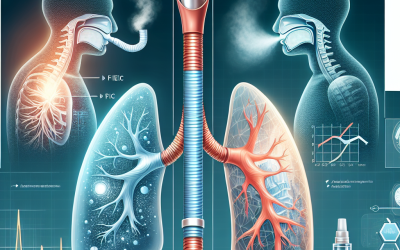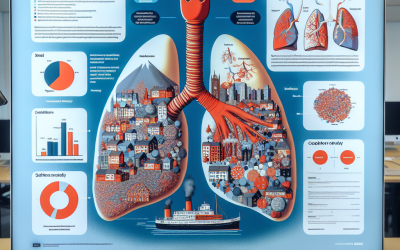Summary
Background
Lipocalin-2 (LCN2) is a positively regulated secretory glycoprotein by oxidative stress; Additionally, patients with idiopathic pulmonary fibrosis (IPF) have shown elevated levels of LCN2 in bronchoalveolar lavage fluid (BALF). This study aimed to determine if circulating LCN2 could be a systemic biomarker in patients with IPF and investigate the role of LCN2 in a mouse model with bleomycin-induced lung injury.
Methods
We measured serum levels of LCN2 in 99 stable IPF patients, 27 patients with acute exacerbation (AE) of IPF, 51 patients with chronic hypersensitivity pneumonitis, and 67 healthy controls. Additionally, we evaluated LCN2 expression in lung tissue in a mouse model with bleomycin-induced lung injury and investigated the role of LCN2 using LCN2 knockout mice (LCN2 -/-).
Results
Serum levels of LCN2 were significantly higher in patients with AE-IPF than in the other groups. The multivariable Cox proportional hazards model showed that elevated levels of serum LCN2 were an independent predictor of poor survival in patients with AE-IPF. In the mouse model with bleomycin-induced lung injury, a higher dose of bleomycin resulted in higher levels of LCN2 and shorter survival. LCN2-/- mice treated with bleomycin showed increased levels of cells and proteins in BALF, as well as hydroxyproline content. Additionally, compared to wild-type mice, LCN2-/- mice showed higher levels of circulating 8-isoprostane, as well as lower expression levels of Nrf-2, GCLC, and NQO1 in lung tissue after bleomycin administration.
Conclusions
Our findings demonstrate that serum LCN2 could be a potential prognostic marker for AE-IPF. Additionally, LCN2 expression levels may reflect the severity of lung injury, and LCN2 may act as a protective factor against acute lung injury and oxidative stress induced by bleomycin.
Background
Idiopathic pulmonary fibrosis (IPF) is a progressive pulmonary fibrotic disease and acute exacerbation (AE) of IPF is potentially fatal. Considerable variations exist in the clinical course of IPF: between 4.8% and 14.2% of IPF patients develop AE within 1 year. While the causes of IPF and AE-IPF remain unclear, reactive oxygen species (ROS) have been associated with the pathogenesis of IPF and AE-IPF. Patients with IPF have increased oxidative products and decreased antioxidants in the lungs and circulation. Additionally, patients with AE-IPF have higher oxidative stress levels than those with stable IPF, and there are significant positive correlations between AE-IPF incidence and exposure to O3, NO2, radiation, and particles that induce oxidative stress. However, the regulatory mechanism of oxidative stress in patients with IPF and AE-IPF is still unclear.
Lipocalin-2 (LCN2) is a 25 kDa secreted protein expressed in epithelial cells and immune cells such as neutrophils and macrophages. LCN2 expression is positively regulated by exposure to ROS, including O3 and H2O2, and radiation in vitro and in vivo. Furthermore, LCN2 has been shown to induce antioxidants in vitro. Elevated expression of LCN2 has been observed in patients with chronic obstructive pulmonary disease and acute respiratory distress syndrome, which has been associated with higher levels of oxidative stress. Additionally, patients with IPF have higher levels of LCN2 in BALF than those with other interstitial pneumonias. However, it is still unclear if LCN2 could be a systemic biomarker in IPF patients; furthermore, the association of LCN2 with the pathogenesis of IPF and AE-IPF remains elucidated.
This study aimed to investigate if circulating LCN2 could be a biomarker for IPF. Additionally, our goal was to examine pulmonary and circulatory levels of LCN2 in a mouse model with bleomycin-induced lung injury (BLM). Finally, our objective was to investigate the role of LCN2 in BLM-induced lung injury using LCN2 knockout mice (LCN2 -/-).
Materials and methods
Study population and design
This study included 99 stable IPF patients followed for over 6 months, 27 AE-IPF patients, 51 chronic hypersensitivity pneumonitis (CHP) patients, and 67 healthy controls. The IPF and CHP patients were diagnosed at Hiroshima University Hospital between June 2002 and June 2020. IPF was diagnosed following American Thoracic Society (ATS) and European Respiratory Society (ERS) criteria. Stable IPF patients were defined as those who remained stable for 2 months before examination. AE-IPF patients were diagnosed using the International Working Group Report diagnostic criteria for AE-IP. CHP was diagnosed according to criteria proposed by Yoshizawa et al. This study was approved by the Ethics Committee of Hiroshima University Hospital, and all participants provided written informed consent.
Animals
LCN2-/- mice (backcrossed for at least 10 generations with C57BL/6J mice) were acquired from The Jackson Laboratory and raised. LCN2 deficiency was confirmed by polymerase chain reaction (PCR) analysis. Female C57BL/6 wild-type mice and LCN-/- mice were housed in a pathogen-free environment at an optimal temperature with a 12-hour light/dark cycle and used for experiments at 9 to 10 weeks of age. All protocols were approved by the Animal Research Committee of Hiroshima University and conducted according to the Guide for the Care and Use of Laboratory Animals, 8th ed, 2010 (National Institutes of Health).
Establishment of the bleomycin-induced lung injury mouse model
On day 0, mice were anesthetized with a mixture of anesthetic agents and administered intraoral BLM at 2.0 mg/kg and 10.0 mg/kg body weight in phosphate-buffered saline.
Mouse bronchoalveolar lavage fluid
The trachea was exposed, cannulated, and lavaged with PBS. The lavage fluids were collected, centrifuged, and stored for protein and LCN2 level measurements. Cell counts were determined, and differential cell counts were performed.
Measurement of LCN2, 8-isoprostane, and proteins concentrations
Human blood samples were collected and stored for subsequent analysis. Serum LCN2 levels and mouse BALF levels were measured using commercially available enzyme-linked immunosorbent assay (ELISA) kits. Mouse BALF protein levels were determined using a BCA protein assay kit. Mouse serum was analyzed using the 8-isoprostane ELISA kit as per the manufacturer’s protocol.
Hydroxyproline assay
Hydroxyproline content in mouse lungs was evaluated as previously described. Briefly, the sample was homogenized, hydrolyzed, and the supernatant was used for the hydroxyproline assay. Absorbance was measured to determine hydroxyproline content using a plate reader.
PCR analysis
Total RNA was extracted from mouse lungs, reverse transcribed, and subjected to real-time quantitative PCR using TaqMan gene expression assays. Actb was used as an internal control. TaqMan gene expression assays were used for LCN2, GCLC, Nrf2, and NQO1.
Lung histology and immunohistochemical staining
Mouse lungs were fixed in formalin, paraffin-embedded, sectioned, and stained with hematoxylin and eosin. Immunohistochemical staining for LCN2 was performed using the EnVison+ System-HRP (DAB) kit. An anti-LCN2 antibody was used as the primary antibody.
Statistical analysis
Values are expressed as medians (interquartile range (IQR)) unless otherwise indicated. Group comparisons were done using Kruskal-Wallis tests, followed by Mann-Whitney U tests, and Pearson chi-square tests. Multivariate linear regression adjusted for age…



